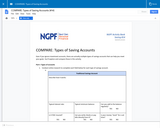
For this activity, students conduct research to find a savings account that would be the best for them.
- Subject:
- Social Studies
- Material Type:
- Lesson Plan
- Provider:
- Next Gen Personal Finance
- Date Added:
- 05/18/2017

For this activity, students conduct research to find a savings account that would be the best for them.

USCIS secures America's promise as a nation of immigrants by providing accurate and useful information to our customers, granting immigration and citizenship benefits, promoting an awareness and understanding of citizenship, and ensuring the integrity of our immigration system.

This article discusses U.S. manufacturing.
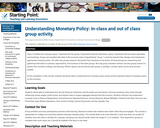
In this lesson, students will be able to understand how the fed, financial institutions and the public act and interact, and how monetary policy works through influencing money supply, credit access, and interest rates to impact aggregate demand and the economy. Students will learn and understand concepts such as Reserve Requirement, Actual Reserves, Required Reserves, Excess Reserves, Money Multiplier, Federal Funds Rate, Discount rate, Prime Rate, Open Market Operations, Term Auction Facility, Cyclical Asymmetry and the Liquidity Trap. At the completion of this activity, students should be able to understand how monetary policy works and the potential impact of monetary policy on the economy.
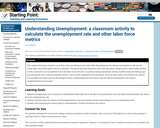
This simple activity gets students out of their seats and talking to each other while illustrating how the national unemployment rate and the civilian labor force participation rate are calculated. Through small group interaction and class discussion, students gain a better understanding of who is and who is not considered to be in the labor force and who is counted as being unemployed. Initially, students break into three groups and assume the role of various economic citizens: from the fully employed to the imprisoned. Once the entire class is reconvened, the metrics are calculated and topics such as discouraged workers, underemployment and reasons why the official unemployment rate may be underestimated are discussed.
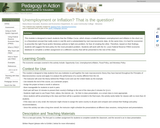
This module is designed to teach students that the Phillips Curve, which shows a tradeoff between unemployment and inflation in the short run, is a theoretical concept that really exists in real life and is substantiated by real macroeconomic data. At the same time, it is hard for economist to prescribe the right Fiscal and/or Monetary policies to fight one problem, for fear of creating the other. Therefore, based on their findings, students will suggest the best policy for the most prevalent problem. Students will work with the St. Louis Federal Reserve FRED economic database to complete a written assignment on a different country that will be presented to the rest of the class.
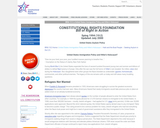
In this lesson, students review the history of immigration quotas in the United States and the issue of how to assist Jewish refugees in the time of WWII. A set of discussion questions is provided. In an associated activity, students role play a meeting between President Roosevelt and members of his cabinet where they will review 5 proposals concerning the issue of aid to Jews during the war.

This experiment illustrates the value of exchange to students. Students each receive an initial allocation of candy which they are asked to rank in terms of the satisfaction it provides them. They are then allowed to engage in trading with other students. After each round of trading, students are asked to reevaluate the satisfaction they derive from the new set of candy that they have. Through this process, students see that they are made better off from exchange.

In this lesson, students examine the question: How can states preserve judicial independence and still make judges accountable to voters?. A set of discussion questions is provided. In an associated activity, students role play voters deciding whether to retain judges.
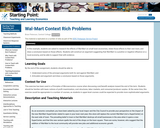
In this activity, students are asked to research the effects of Wal-Mart on small town economies, relate those effects to their own town, and draw a conclusion based on those effects. Students will construct an argument suggesting that Wal-Mart is a positive or negative influence on a local economy, and be able to support that with evidence.

In this lesson, students explore the past and present issues involved with America's involvement in Afghanistan. Discussion questions are provided. In an associated activity, students will role play advisers to a U.S. senator on the Foreign Relations Committee. The advisers will advise the senator on a policy option for Afghanistan.
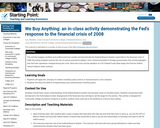
This activity engages students and underscores how quickly and dramatically the Federal Reserve System responded to the financial crisis of 2008. By having students assume the role of various economics players: from commercial banks to foreign governments, this activity highlights how the Fed's operations changed during the crisis. Since the crisis and the adoption of a 0% Federal Funds Rate target, the Fed has shifted toward 'balance sheet' policies.

In this lesson, students will analyze one of six amendments to the U.S. Constitution through the framework of its economic, political, social or cultural, and international contexts. Using the information that they gather, students are instructed to create timelines that encompass both the amendment and pertinent events before, during, and after adoption of the amendment. These timelines will then be combined so that students can more fully evaluate and interpret how the U.S. Constitution has evolved in the historical context of our democracy.

This lesson involves students in a number of critical thinking exercises. Each exercise presents a series of quandaries representing many great ideas and principles that have shaped our constitutional heritage, some
contradictory but of equal merit to the others. In each exercise, students apply principles and ideas to a contemporary issue and then take a position and defend their judgments.

This lesson examines sources of presidential power and ways that checks and balances limit presidential power.

This resource provides details and activities on the executive branch of the U. S. government.

In this lesson, students act as newspaper reporters to learn about this time in history. These reporters look for information from fictitious letters that reflect actual problems and people’s concerns during this tragic time in our economic history. Based on what they learn through the letters, students construct a newsletter explaining the cause(s) of this economic catastrophe.

In this lesson, students participate in an activity that illustrates falling wages, rising unemployment and falling prices. They learn about the role of the collapsing U.S. banking system in causing the Great Depression. They participate in a simulation to learn what a bank failure is and how bank failures can lead to bank panics. Finally, they observe the impact that many events occurring at the same time might have on the economy.
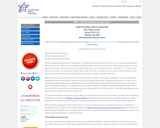
In this lesson, students examine various crime-control strategies. A set of discussion questions is provided. In an associated activity, the class will divide into four study groups. Each group will investigate and report to the class its recommendation on one of the provided crime control questions.

In this lesson, students will understand the process by which candidates for U.S. president are nominated by the Democratic and Republican parties. They will identify and understand differences between primaries and caucuses and key terms and issues related to the primary season.